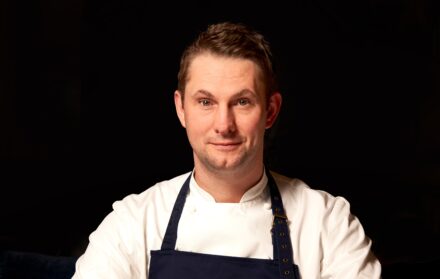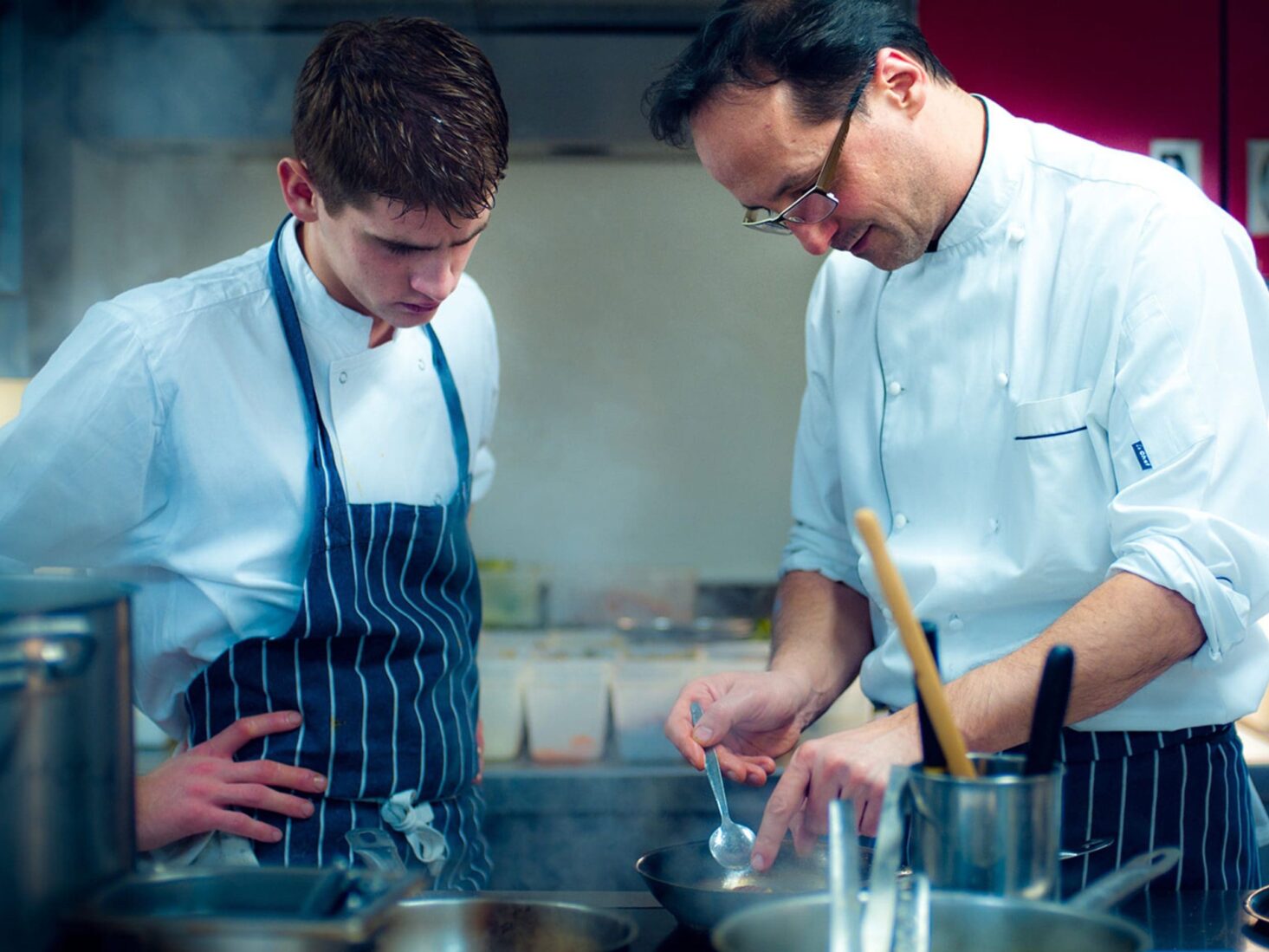
Top tips on cooking fine vegan food from plant-based pioneer Alexis Gauthier
The Michelin-starred chef on why leaving meat behind has taken his food to the next level
All products are chosen independently by our editors. Luxury London may earn commission on items purchased.
The day after his 42nd birthday, Michelin-starred chef Alexis Gauthier went vegan – not for the month, not for the year, but for good.
“I was still cooking meat and fish at the restaurant,” says the now 48-year-old, referencing Gauthier Soho, one of the restaurants credited for raising the profile of fine, vegan-based dining in the capital, “but I wasn’t eating it or trying it.”
Did that not make him crave what he had just given up?
“No. If anything, I felt slightly disgusted.”
In the six years since, Gauthier hasn’t looked back. The chef made the decision, in part, for health reasons. He had been diagnosed with fatty liver disease, what he describes as a “classic French chef problem”, triggered by the cuisine’s enthusiasm for butter and cream. “I started off as a middle-aged man needing to be more careful about what I ate,” says Gauthier. “But after I did some research about our relationship with animals, I came to the conclusion that there was just no reason for us to eat them.”
He lost weight and lessened the pain of his condition, but what he gained was a greater understanding of what the human body needs. “We are not made to eat dead bodies. This is a sad fact, but we are not up at the top of the food chain. We are made to pick up things which are at our height on the trees, on the floor, and that’s it.”

The menu at his London restaurant Gauthier Soho is now “99 per cent” vegan, a step-by-step transition fuelled by the overwhelming popularity of his Les Plantes tasting menu – thought to be the first of its kind in the country – which has become a high-end cult favourite, beloved by the likes of Benedict Cumberbatch and Stella McCartney.
“In the past, I never thought that you could design an entire meal around plant-based food,” he says. “But now I look back and say, ‘Oh my gosh, how ignorant was I?!’”
While 2020 was an unmitigated disaster for the restaurant industry, the year brought about some significant positives for the vegan cause. A study by The Vegan Society revealed that 1 in 5 Brits cut down on their meat intake during the first lockdown, while 15 per cent reduced their dairy intake. Consumer data also shows that sales of tofu increased a staggering 82 per cent. As such, this year’s Veganuary and World Vegan Month have been predicted to be the most celebrated yet, with more of us than ever ditching the animal products.
Vegan debutants, however, will need to rely on their home cooking skills to make their food exciting without meat and dairy – and will need to get creative to help make the habit stick, says Gauthier. “You might be able to do it for a few days relying on the tofu and green salad. But trust me, you’re never gonna sustain a year of deliciousness by doing that.”
Top tips for cooking quality vegan food at home
Break the rules

The first step to truly tasty vegan food, says Gauthier, is not being afraid to break the rules.
“I was a classically French chef. There were things you were allowed to do, and things you were not allowed to do. In the world of designing a menu, for example, you would never bring strawberry into a starter, and you would never bring aubergine into a pudding. However, in the world of plant-based cooking, there is no preconception, there are no rules.
“In puddings, if you don’t want to have some sort of combination of eggs and cream and butter to make something rich and moist, the pulp of an aubergine is 10 times as refined, delicate and delicious.”
While you should be prepared for your approach to veg to be turned on its head, one constant to commit to is sourcing high-quality, flavour-packed produce. To do that, you’re going to need to get your calendar out.
Pick ingredients that are in season
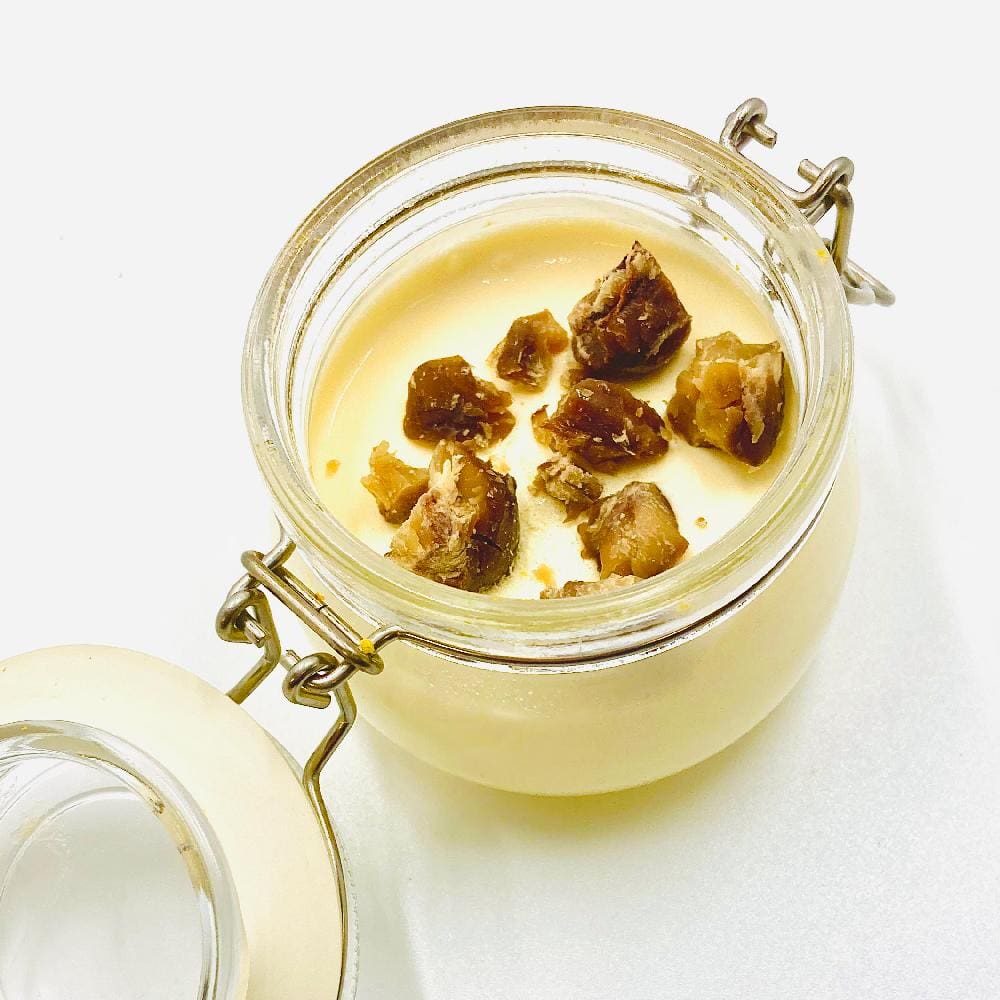
“Just like in the non-vegan world, good ingredients are always important, and following the seasons is vital,” says Gauthier. “If you think about Veganuary, it’s really not the best time of the year to enjoy vegetables,” he admits. “You won’t be able to do a good asparagus, for example. They aren’t in season now, but when they are in season in May they are delicious, nutty, have a wonderful texture, and appeal to animal-eaters.”
To get the most out of your winter veg, take them to South Asia. “Some of the root vegetables available now go very well in Indian or Sri Lankan-inspired dishes which are super exciting, colourful, appeal to pretty much everyone and yet, are plant-based.”
Go international
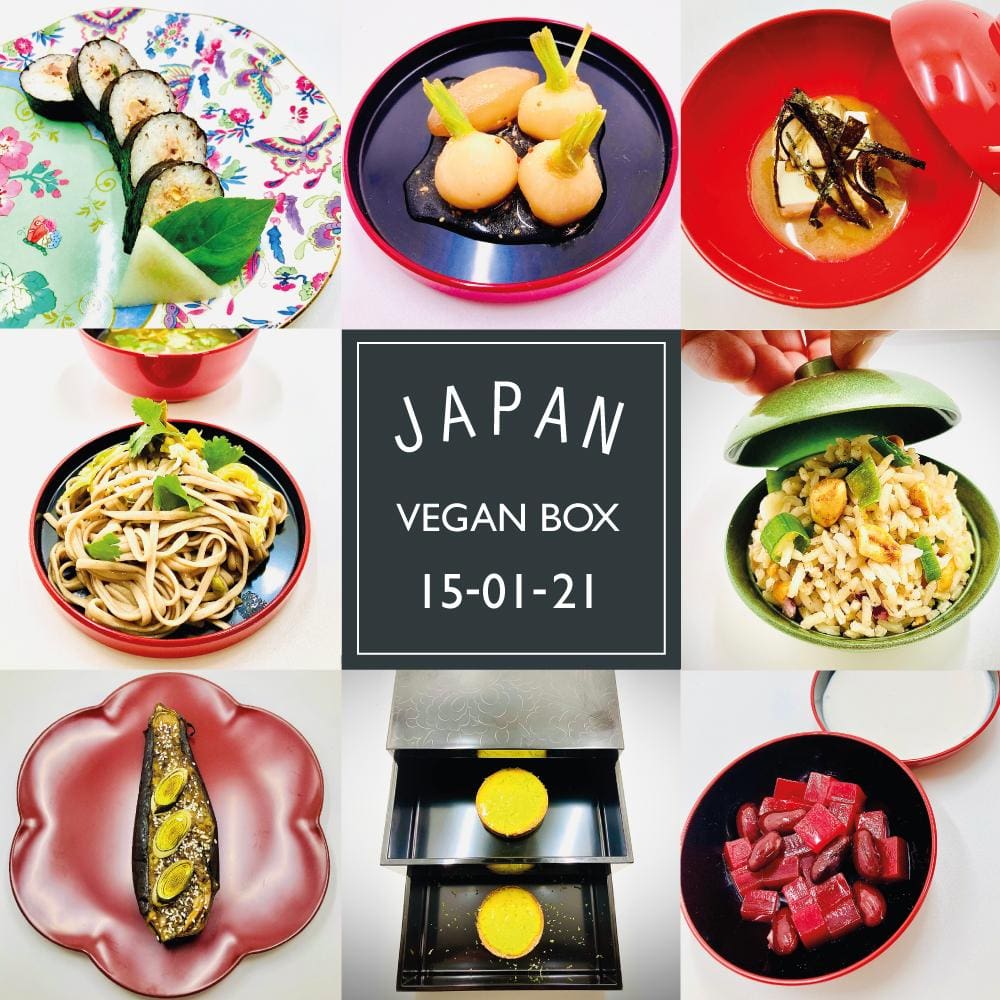
Taking inspiration from around the world is key, says Gauthier, to unlocking the wonders of vegan food all year round.
“The origins of good recipes are plant-based,” he says. “Vietnamese food is really flavoursome and naturally plant-based – not like the French, who are trying to make boeuf bourguignon with plants.”
In Gauthier’s home kitchen, Mexico is the destination of choice. “My son loves [Mexican food]. It has got so many dishes that are compatible with plant-based food – enchiladas, tortillas, stewed aubergine with pepper and tomato – and it’s easy to appeal to kids.”
What if you’re really craving the flavour of meat?
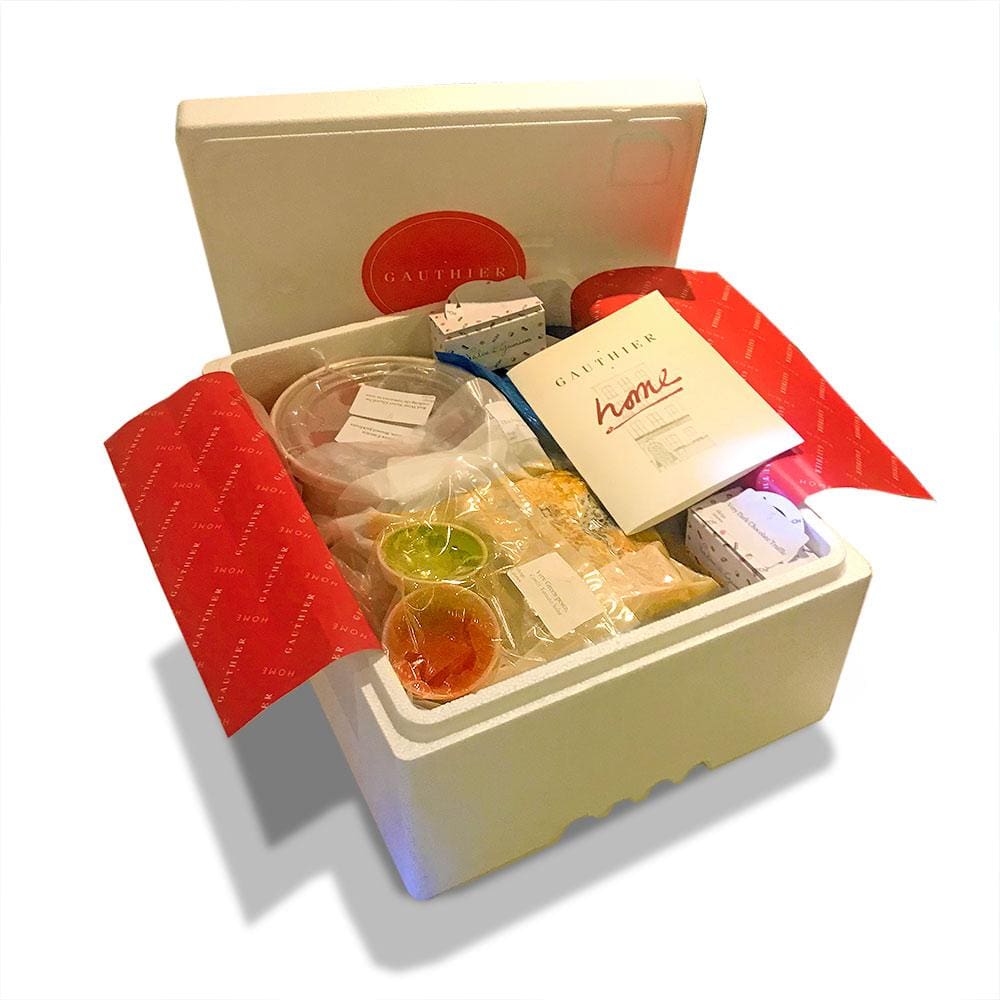
For that, Gauthier looks to Japan. “Everything with miso is pleasing to the tastebuds, as it has this super-umami deliciousness,” he says, of the fermented soybean paste. “It can be the base of so many delicious creations, so many sauces and soups. That’s one of the tricks we use in the restaurant.”
Gauthier is not just supportive of the use of meat substitutes, but enthusiastic – particularly if you can get your hands on high-quality ones. “I think, when people are trying to embrace veganism, it’s all about textures that they are comfortable with eating. I’ve had the Impossible Burger in the States and that’s a game-changer. It’s as good if not better [than beef] – it tastes like juicy wagyu meat.”
The chef has even created his own meat doppelganger, and in doing so acquired a new signature dish. Forget “foie gras” – at Gauthier Soho, it’s all about “faux gras”.
Fake it to make it
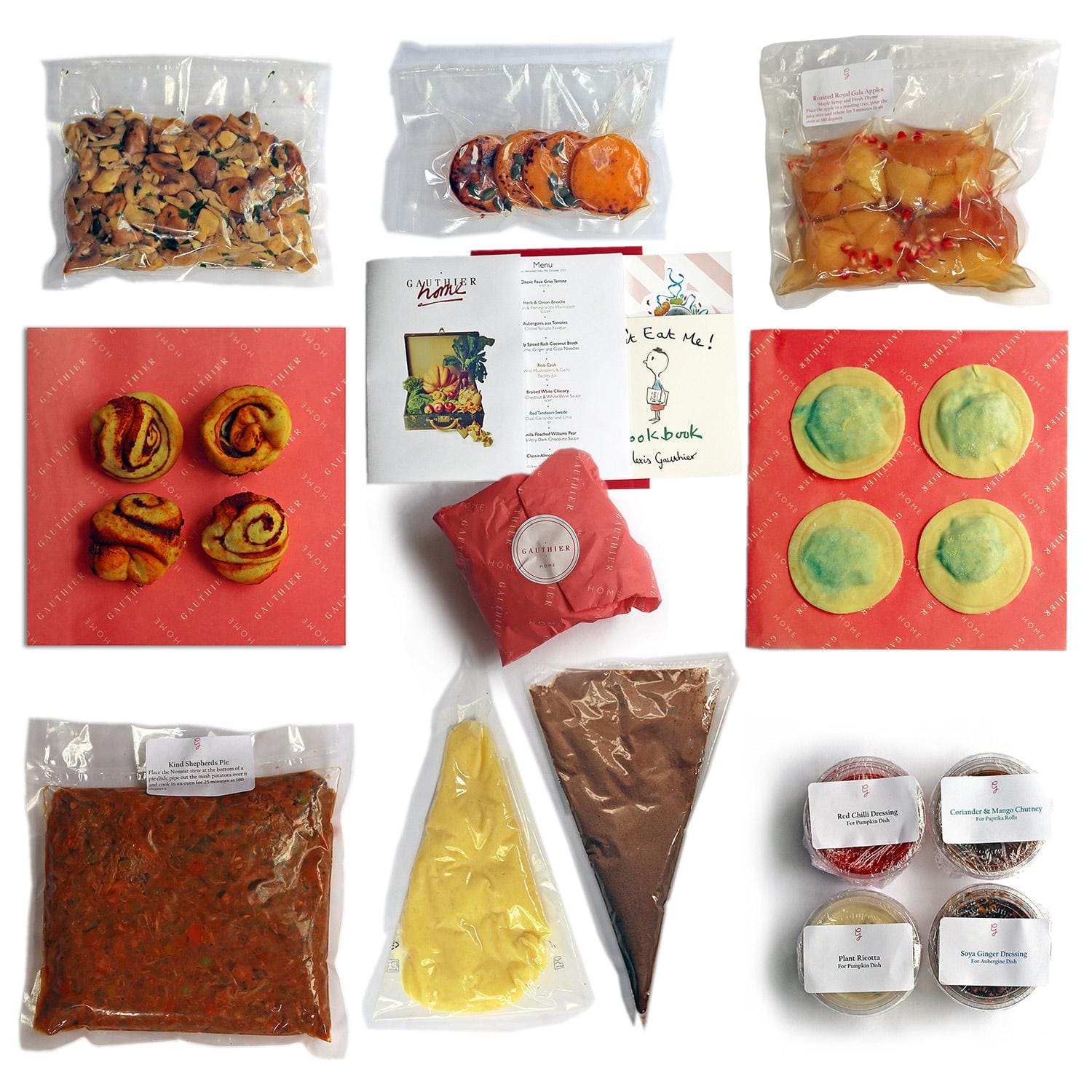
The production of the classic dish, made with fattened goose or duck liver, has been blasted as cruel for its frequent use of force feeding. Having previously served foie gras en masse in his restaurants, Gauthier sought a way to replicate the dish – the result is an umami-rich pâté made with mushrooms, soy, Cognac and beetroot.
“What you like in foie gras is the transformation of plants through the fat of the animal. That’s all it is. And so, really, the animal is a bit redundant, if you think about it.”
Turning one of fine dining’s most luxurious ingredients vegan is an integral tool in getting this Michelin-starred chef’s followers to rethink their animal consumption. “[The food is] designed to be enjoyed by vegans but, most importantly, by non-vegans too,” he says. “We want to show them that it can be delicious, appetising and exciting as the result of some creative thinking.”
After years of dedicating himself to a vegan diet, Gauthier could not fathom turning back. But the ease of his dedication can perhaps be attributed to having not quite given up everything adored by classical French chefs.
“I am still drinking wine,” he laughs. “That’s for sure.”
Read more: Tom Kerridge on lockdown, Liam Gallagher and the resilience of the restaurant industry








